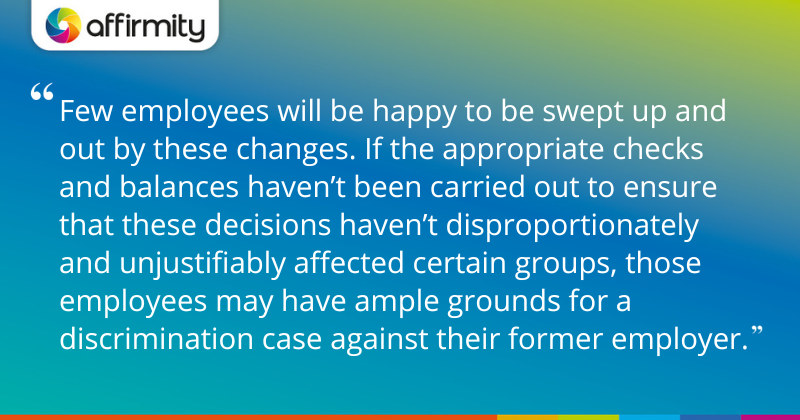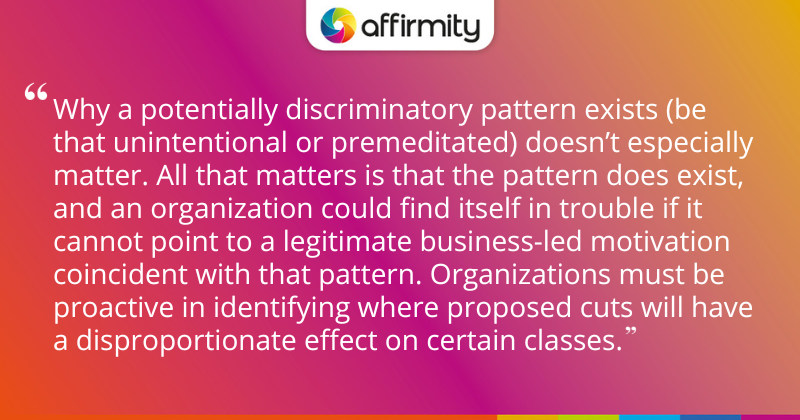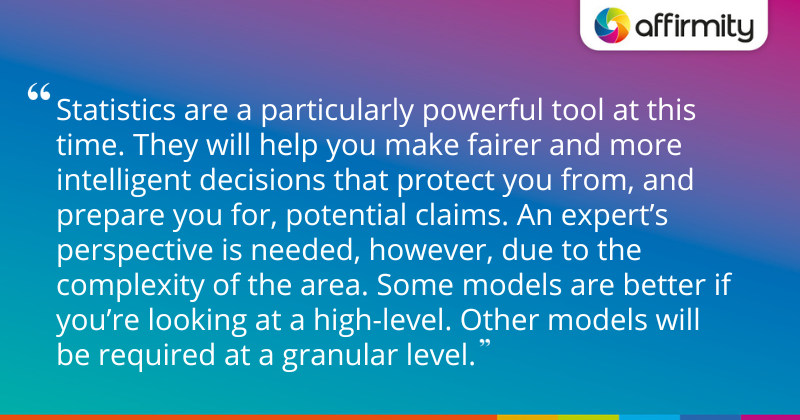Reduction in Force (RIFs) and furlough measures are never taken lightly. But with forecasts of recession in 2023 and redundancies already gathering pace, organizations may soon find themselves making some difficult decisions. In this article, we examine how dismissal strategies will inevitably find themselves under the microscope—and how, via workforce analytics, organizations can deal fairly and cautiously with these painful but necessary measures.
Though there’s no consensus on exactly when to expect the start of prolonged economic downturn in 2023, or about exactly how deep we can expect that downturn to be, economists largely agree that 2023 will be a recession year. As ever, such downturns regrettably mean layoffs, and we’re already seeing evidence of increasing dismissals in certain sectors. Forbes reports that large US tech companies, banks, and manufacturers cut around 125,000 jobs in the second half of 2022.
Deciding who gets to stay and who has to depart the business is a complex decision and one that comes with an appropriate level of risk. Few employees will be happy to be swept up and out by these changes. If the appropriate checks and balances haven’t been carried out to ensure that these decisions haven’t disproportionately and unjustifiably affected certain groups, those employees may have ample grounds for a discrimination case against their former employer.
MORE ON ORGANIZATIONAL DECISION MAKING | ‘6 Ways to Leverage Mergers and Acquisitions to Build Better Inclusion’

What You Need to Know About Disparate Impact Claims
When considering the legality of decision-making for salary reduction, furloughs, layoffs, terminations, and recalls, the theory applied in law will be that of ‘disparate impact.’ An important distinction to understand upfront is that disparate impact claims specifically require no proof of intent. This differs from individual employment discrimination cases, where a ‘disparate treatment’ theory is applied, and the plaintiff must provide evidence that the employer set out to discriminate against them.
This renders this type of decision-making somewhat challenging, because why a potentially discriminatory pattern exists (be that unintentional or premeditated) doesn’t especially matter. All that matters is that the pattern does exist, and an organization could find itself in trouble if it cannot point to a legitimate business-led motivation coincident with that pattern.
This challenge effectively requires organizations to be proactive in identifying where proposed cuts will have, or have had, a disproportionate effect on certain classes.
ALSO ON THE BLOG | ‘Leveraging Your AAP for Better Workforce Insights’

A Proactive Model for Making Workforce Decisions
The analysis is thankfully relatively straightforward, although it requires a high degree of thoroughness. In summary, organizations should conduct a two-step analysis:
- Firstly, employers should perform a statistical analysis to determine whether any ‘facially neutral’ policy or practice has the effect of disproportionately excluding people on the basis of race, color, religion, national origin, sex, or age.
- Secondly (and if the statistical analysis determines that a discriminatory pattern exists), the employer must explore the business case for the policy or practice. If they can show that the selection procedure is job-related and consistent with business necessity, there is a safe case despite the pattern.
If you’re approaching a decision about salary reductions, furloughs, terminations, or recalls, you will need to assemble a team to perform this two-step analysis. This team should include:
- Business leaders: Encompassing individuals such as the VP of HR, but also general counsel and others. The group will analyze the workforce needs to determine exit or return decisions
- Statistical expert: Whether internal or external to the organization, a skilled statistician will be needed to look for potential disparate impact in the business leadership’s proposals.
- Outside legal counsel: An impartial, outside observer is required to offer advice on the risks of any proposal.
FURTHER THOUGHTS ON USING DATA FOR FAIR DECISIONS | ‘6 Pay Equity Analysis Software Features That Simplify Your Process’

The Role of Statistical Analysis
Statistics are a particularly powerful tool at this time. They will help you make fairer and more intelligent decisions that protect you from, and prepare you for, potential claims. An expert’s perspective is needed, however, due to the complexity of the area.
For example, different models are needed at different levels of the organization. Some models are better if you’re looking at a high-level (whole organization, business units) picture. Other models (for example, Fisher’s exact statistical significance test) will be required at a granular level (specific job titles, roles, or job families).
Furthermore, a granular-level analysis may be required when an adverse impact is discovered in a larger selection, in order to determine the source of that impact. That process requires reiteration and over time, recycling, and repetition in order to determine the best course of action or anticipate risks.
Conclusion: There’s No Time Like the Present
As fears of an economic downturn grow, your organization may well have already made tough employment decisions. The analysis and team requirements remain the same regardless of this, and they can be applied retroactively to identify risk. Furthermore, the economic issues facing employers will continue to evolve, and will require smart decisions under time pressure. Therefore, if you haven’t already assembled a team, it’s imperative that you do so at the nearest opportunity.
If you’re building a team responsible for analyzing the risks inherent in your employment decision-making and are in need of external statistical expertise, contact Affirmity today for a discussion of how our software and solutions can assist.
This blog post was originally published in June 2020 and has been updated with new information.
 About the Author
About the Author
Charles McGhee, PhD serves as Affirmity’s lead statistician. He has over 20 years of expertise in workforce compliance, in the private and public sectors. Prior to joining Affirmity, he served for 10 years as senior statistician with the Office of Federal Contract Compliance Programs (OFCCP) and Equal Employment Opportunity Commission (EEOC). Dr. McGhee holds a PhD in Biostatistics, and undergraduate and Master’s degrees in Mathematics.
